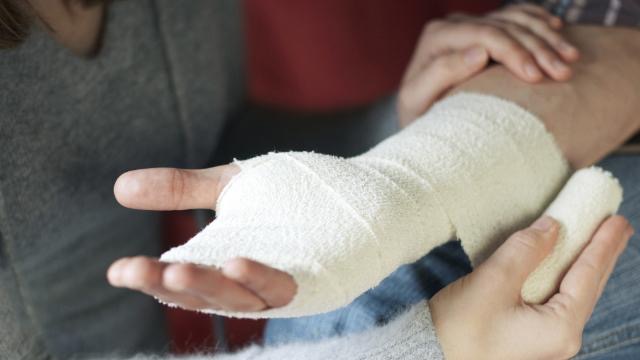Health Blog: Solutions & Wellness Tips
Home exercise and physical therapy beneficial for hand fractures

Completing treatment at home has certain advantages
Fractures of the hand are very common, and about one-third of these fractures involve the metacarpals, which are the bones between the wrist and the fingers. These injuries are particularly common in young adults, and they typically prevent patients from being able to carry out many basic tasks that involve the affected hand. The treatment for metacarpal fractures varies depending on how badly the bone is broken, and some patients choose to have surgery with the hopes of restoring their hand function more quickly. After surgery, physical therapy is typically recommended to help patients achieve these goals, and treatment can be given either within a clinic or through a home-exercise program. There are pros and cons of both approaches to treatment, but the main advantage of a home-exercise program is the fact that less time is needed and it can be performed at the patient's leisure without needing an appointment. Unfortunately, there is not much research to support the use of home-exercise programs for metacarpal fractures. For this reason, a powerful study called a randomized-controlled trial was conducted to compare the two treatments.
Patients are randomly assigned to two groups and evaluated for 12 weeks
Individuals who fractured their metacarpal bone scheduled to have surgery were recruited for the study, and 60 fit the necessary criteria and were invited to participate. These participants were then randomly assigned to either the traditional physical therapy group or the home exercise group. Both treatments started two weeks after surgery, and the physical therapy treatment consisted of 12 30-minute sessions over the course of six weeks. Each physical therapist chose which exercises were to be performed, and they also instructed patients on how to perform these exercises at home. In the home-exercise group, patients were given a booklet with a set of specific exercises, which were to be performed for six weeks. Each day consisted of three exercise cycles, and each cycle consisted of 4-6 exercises and lasted 20-30 minutes. Exercises gradually progressed in terms of intensity as patients improved, and strengthening exercises were performed in the final two weeks. All patients were then evaluated for the flexibility, or range of motion (ROM) of their hand joints, as well as hand function and grip strength at weeks two, six and 12.
Both groups improve to a similar extent
After 12 weeks, results showed that both groups improved in all of the measurements taken. In particular, both the physical therapy and home-exercise group experienced similar improvements in grip strength and hand function, with no major differences found between them. The only significant difference between groups was for ROM of the fingers, as the home-exercise group scored significantly better than the physical therapy group after 12 weeks. These findings suggest that a home-exercise program may be just as effective as a traditional physical therapy program in helping patients recover from surgery for hand fractures. Patients who have fractured their hand preparing to have surgery may, therefore, consider both options after the procedure—and realize the importance of home exercise—to assist them with the recovery process and bring them back to full function as quickly as possible.
-As reported in the April '17 issue of the Journal of Hand Surgery



